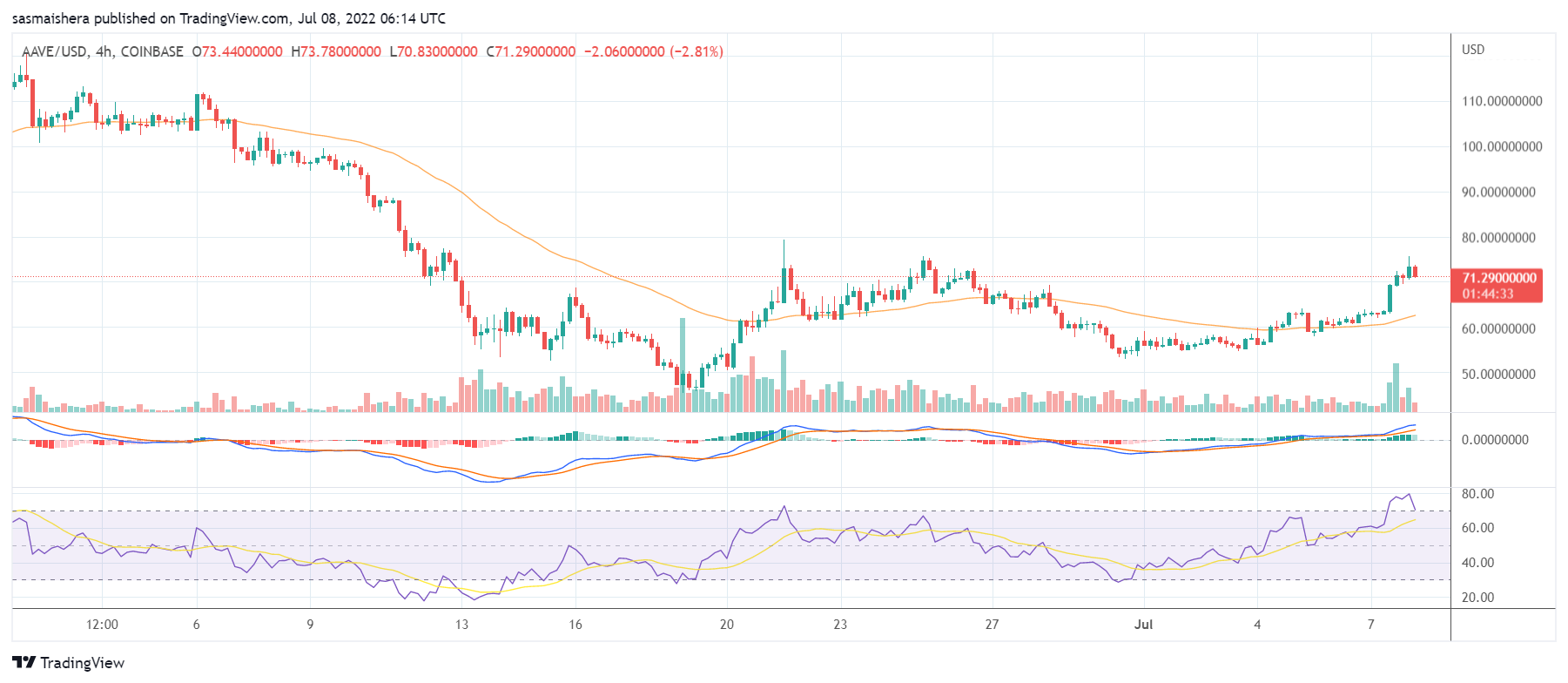
AAVE rallies following the GHO stablecoin proposal
[ad_1]
It has been a positive week for the cryptocurrency market so far, with the prices of most coins up by over 10% in the last seven days
The cryptocurrency market has been performing well since the start of the week. Over the past 24 hours, the total market cap has increased by more than 5%, pushing the total market cap close to the $1 trillion mark.
Bitcoin is trading above $22k once again after adding more than 7% to its value in the last 24 hours. Ether, the second-largest cryptocurrency by market cap looks poised to surge past the $1,300 resistance level after adding 6.8% to its value during the same period.
However, AAVE is one of the best performers amongst the top 50 cryptocurrencies by market cap. AAVE has added more than 15% to its value in the last 24 hours, outperforming the other major coins in the process.
The rally comes as the Aave team proposed the launch of a new stablecoin pegged to the US Dollar to its community.
Aave Companies is proposing to the DAO the introduction of a native decentralized, collateral-backed stablecoin, GHO, pegged to USD. GHO can be launched on the Aave Protocol, allowing users to mint GHO against their supplied collaterals.
1/ Calling all GHOsts 👻
We have created an ARC for a new decentralized, collateral-backed stablecoin, native to the Aave ecosystem, known as GHO.
Read more below and discuss your thoughts for the snapshot (coming soon)!👇https://t.co/P7tHl9LbBe
— Aave (@AaveAave) July 7, 2022
Key levels to watch
The AAVE/USD 4-hour chart is bullish as Aave has been performing well over the past few hours.
The MACD line is above the neutral zone, indicating bullish momentum for the cryptocurrency. The 14-day RSI of 70 shows that AAVE could soon enter the overbought region if the rally is sustained.
At press time, AAVE is trading at $71.63. The token could move past the $79 resistance level over the coming hours. AAVE could target the $98 resistance level for the first time this month if the market momentum is maintained over the next few days.
[ad_2]
Source


